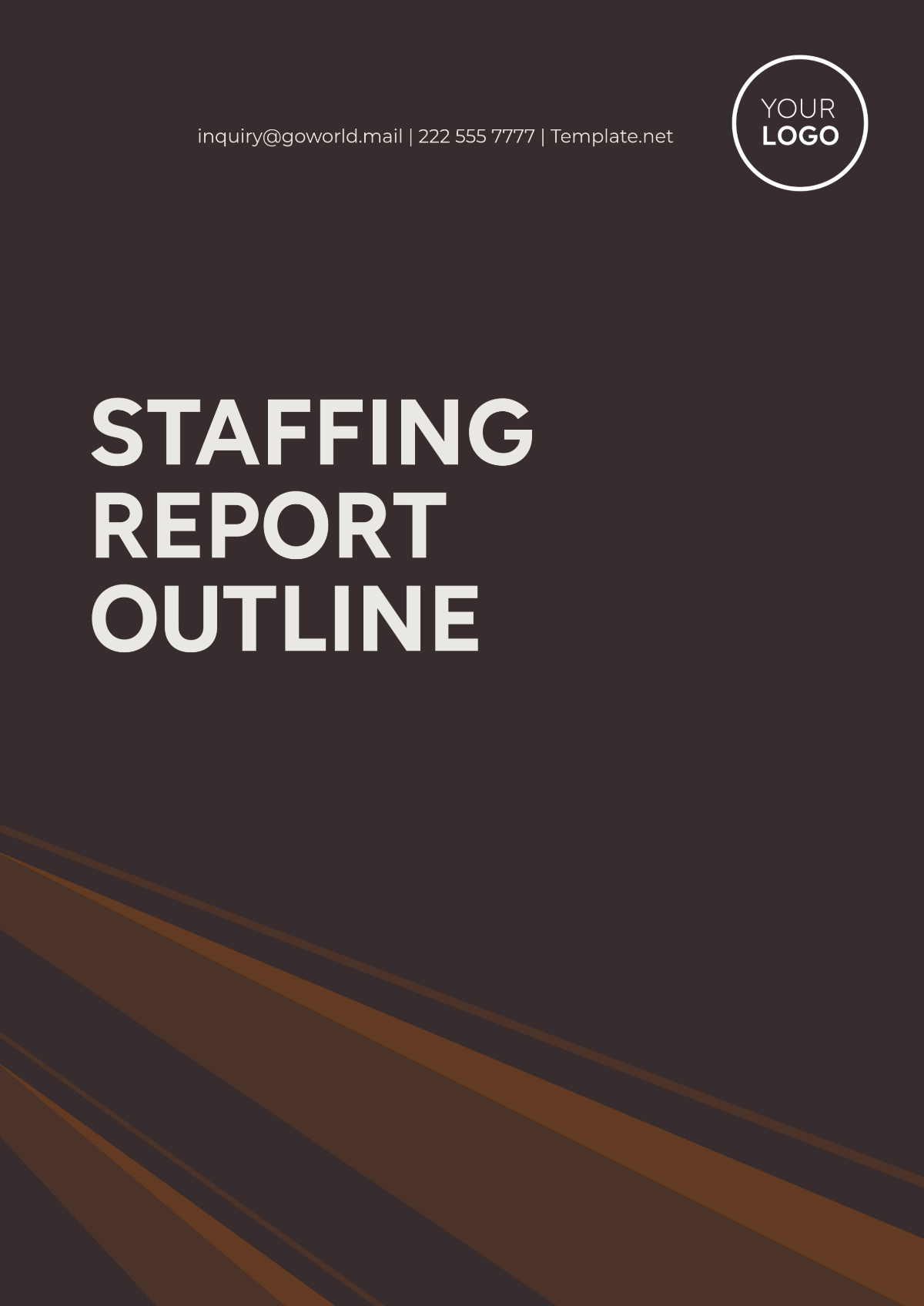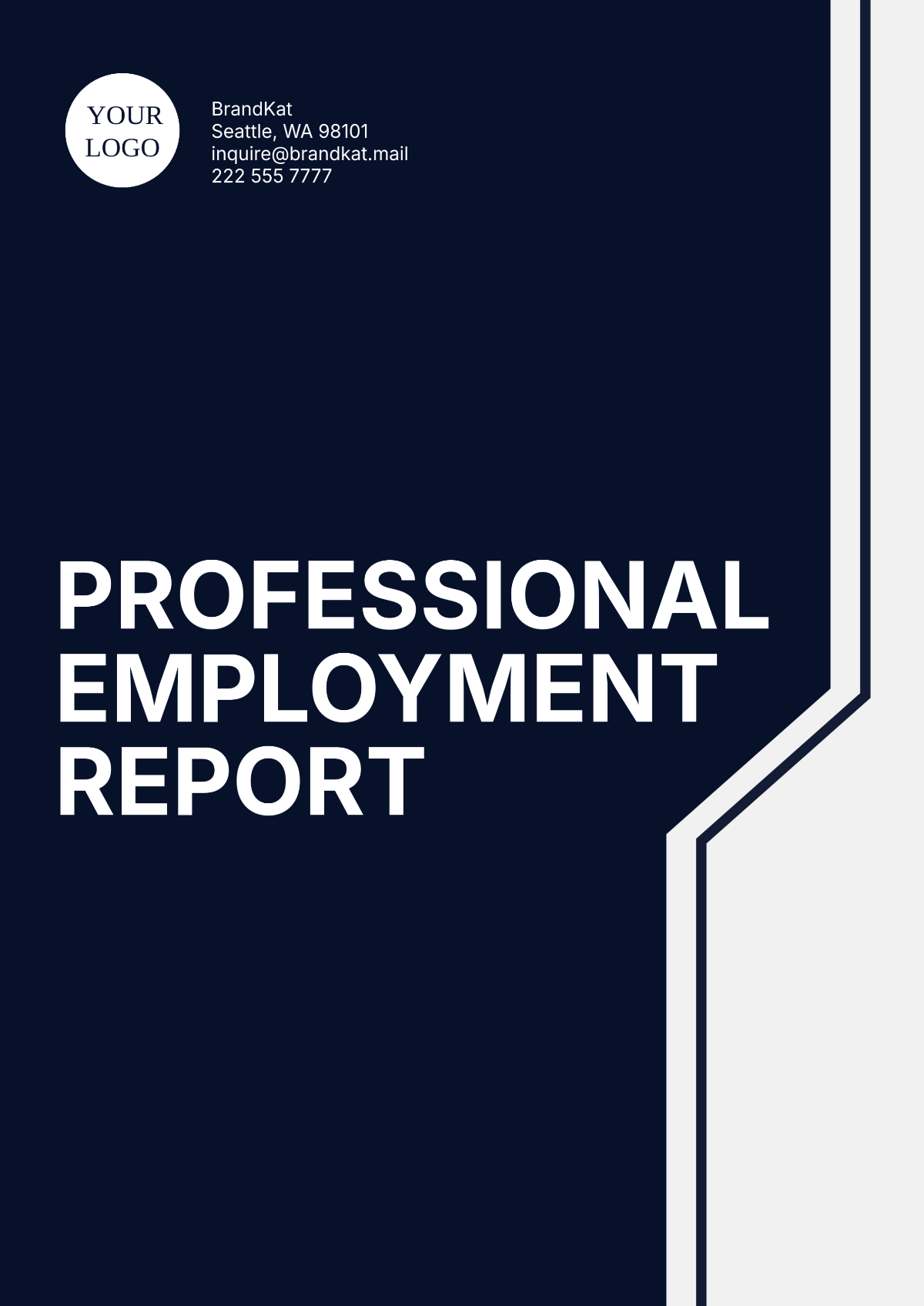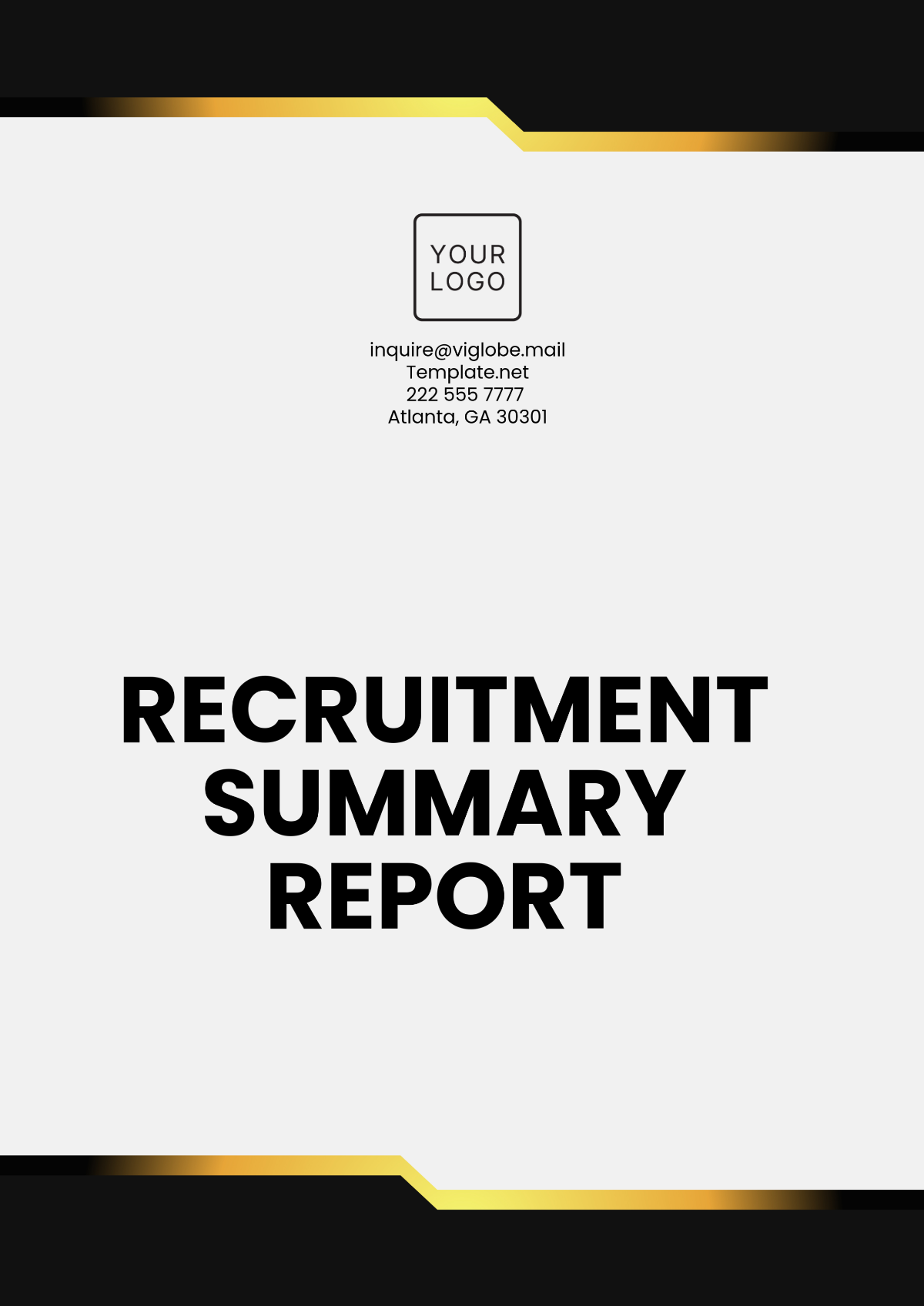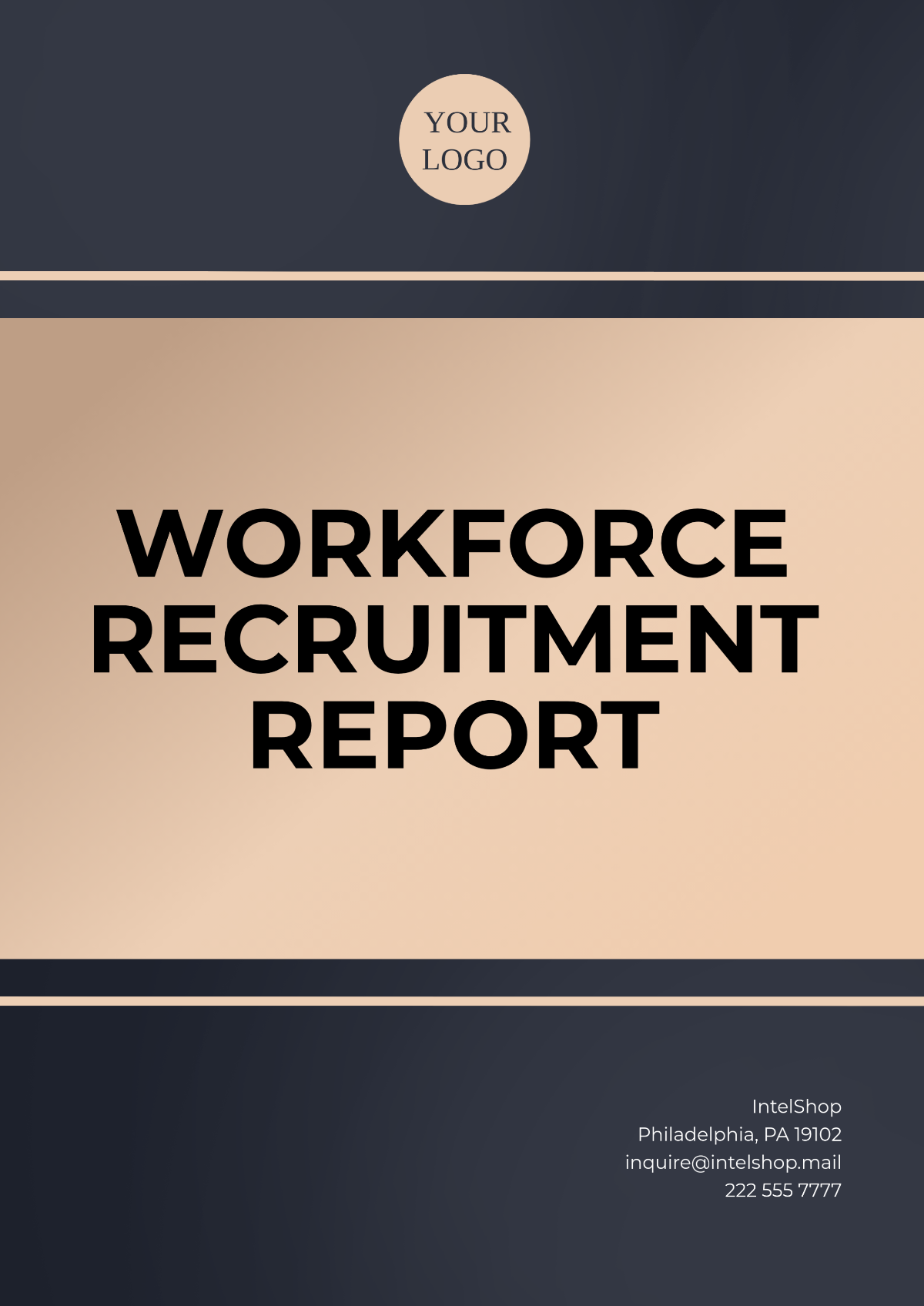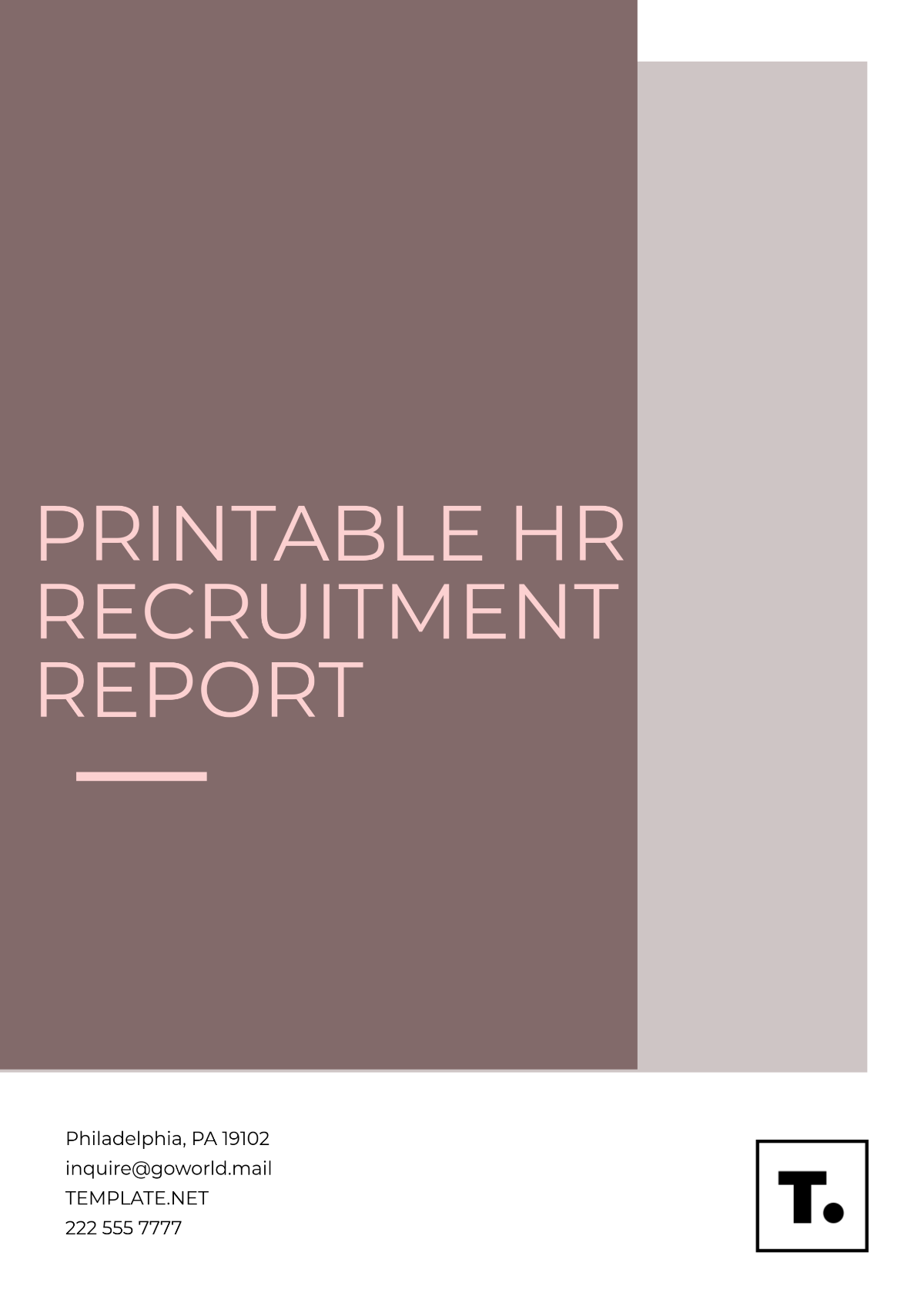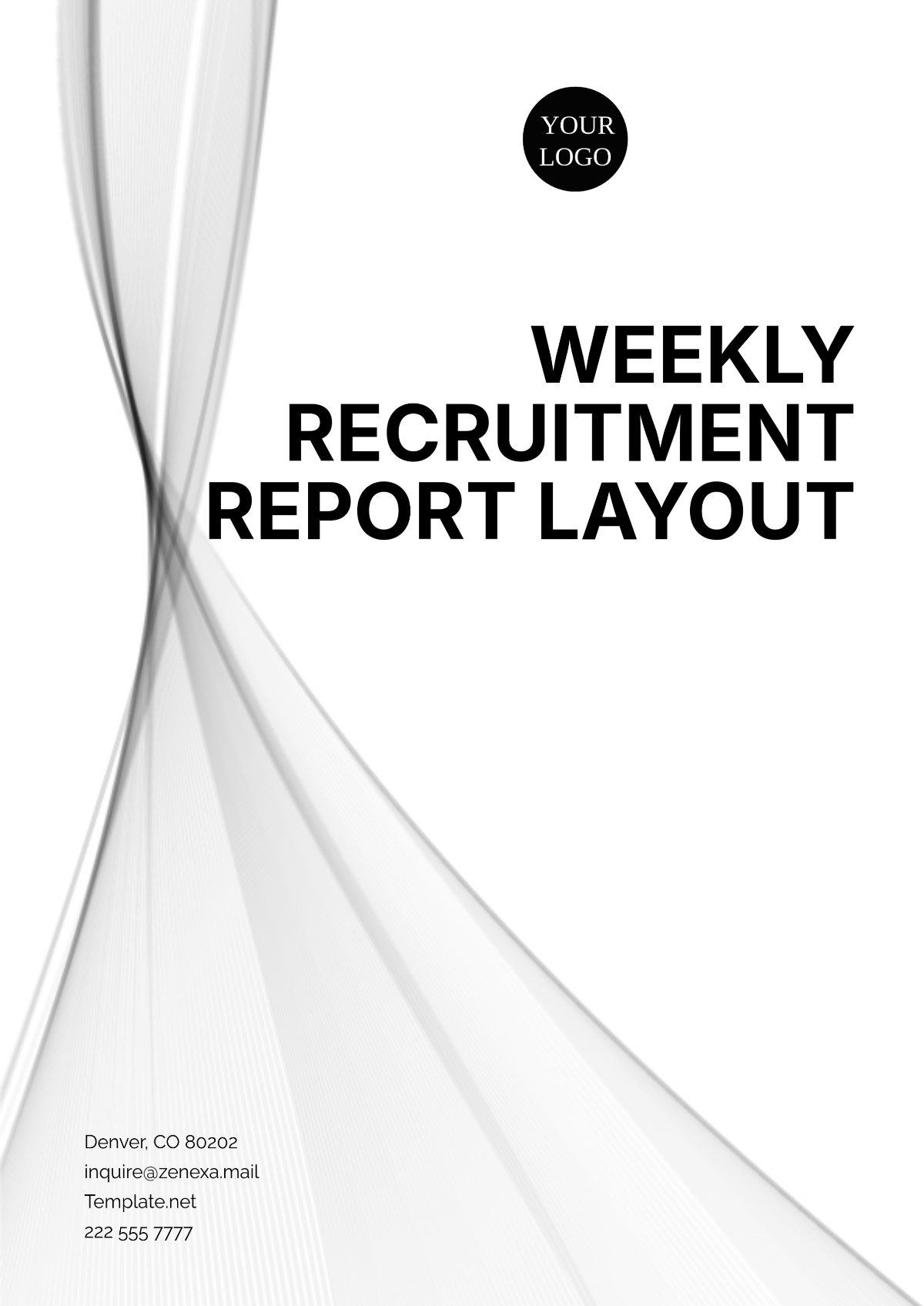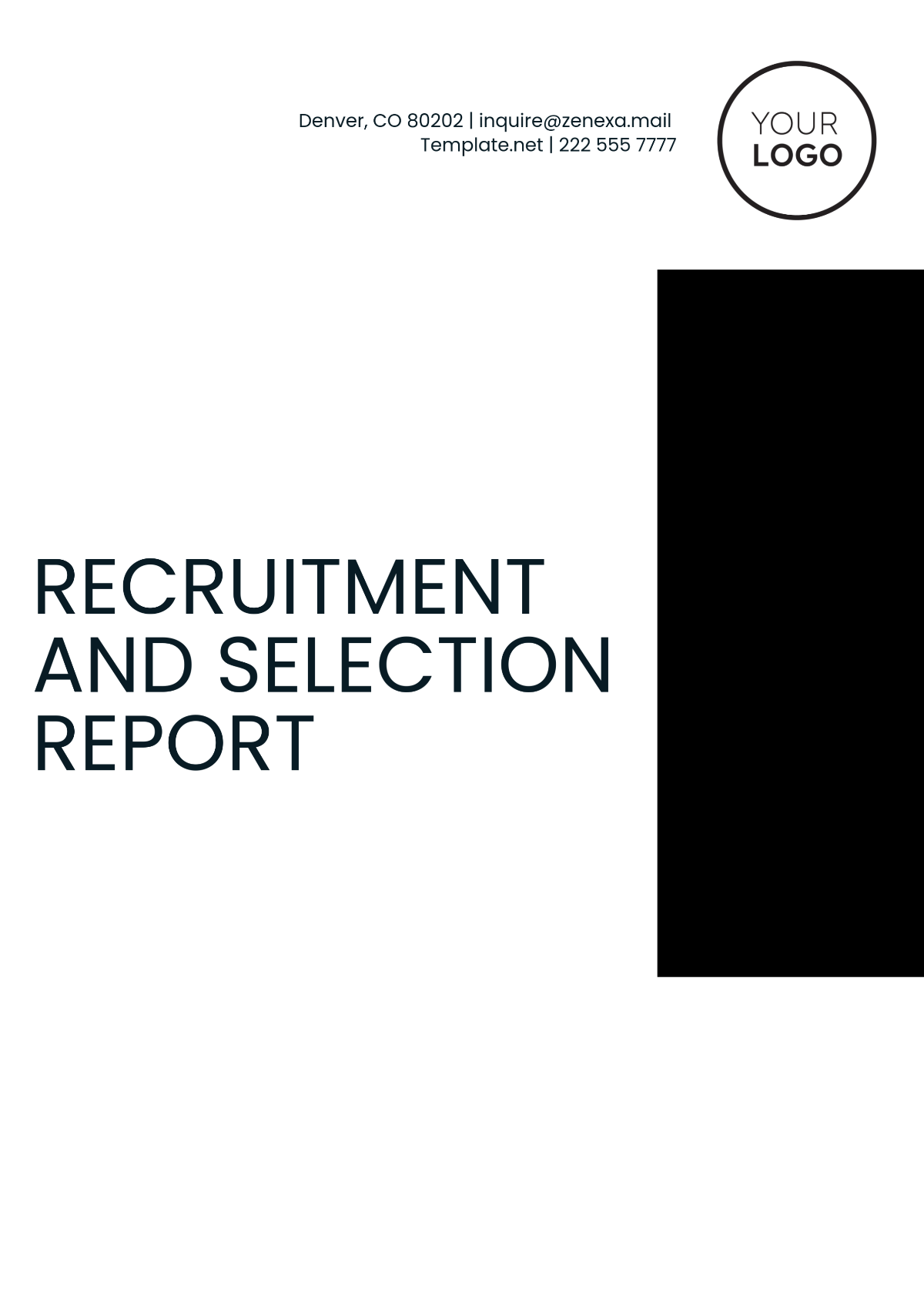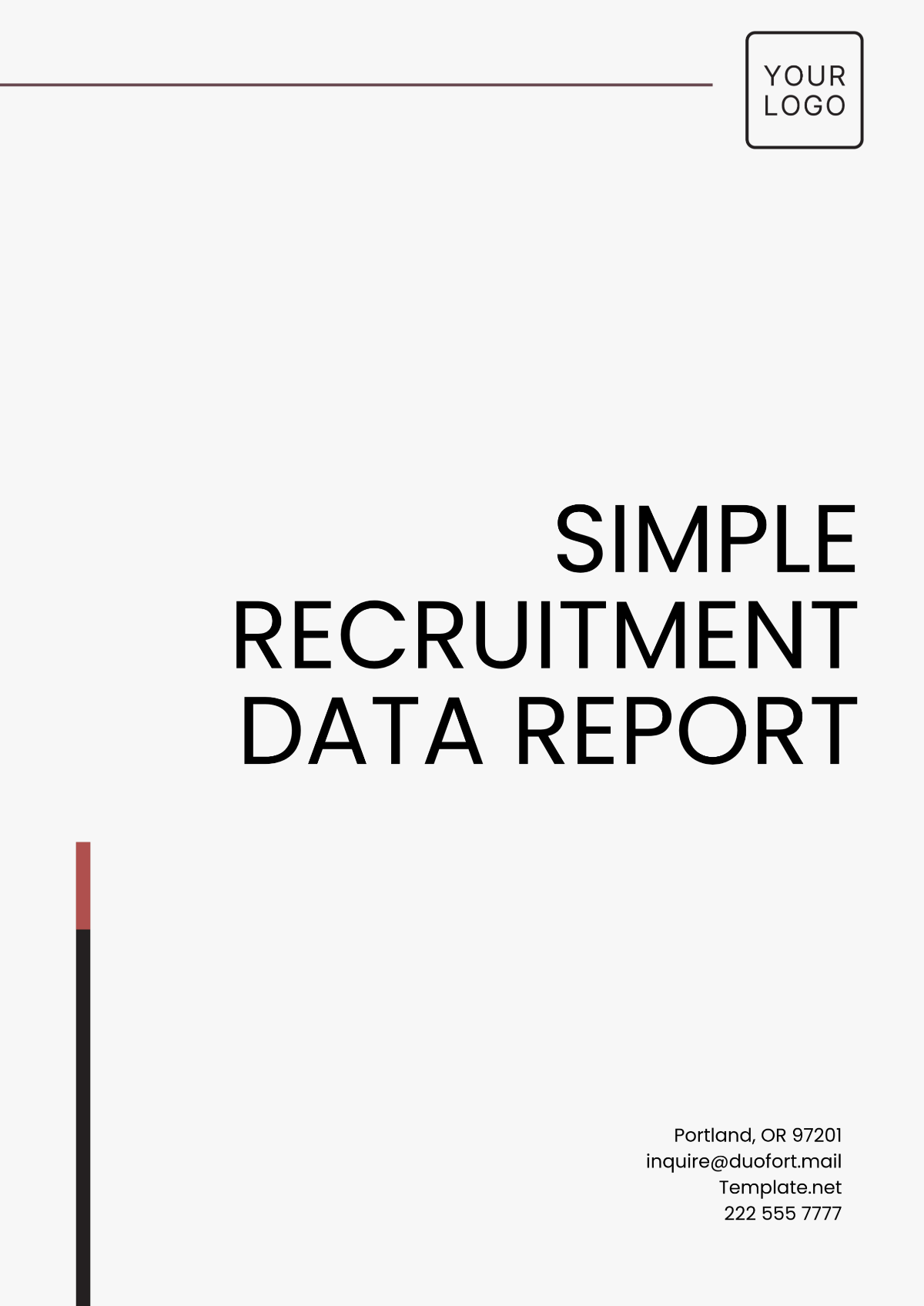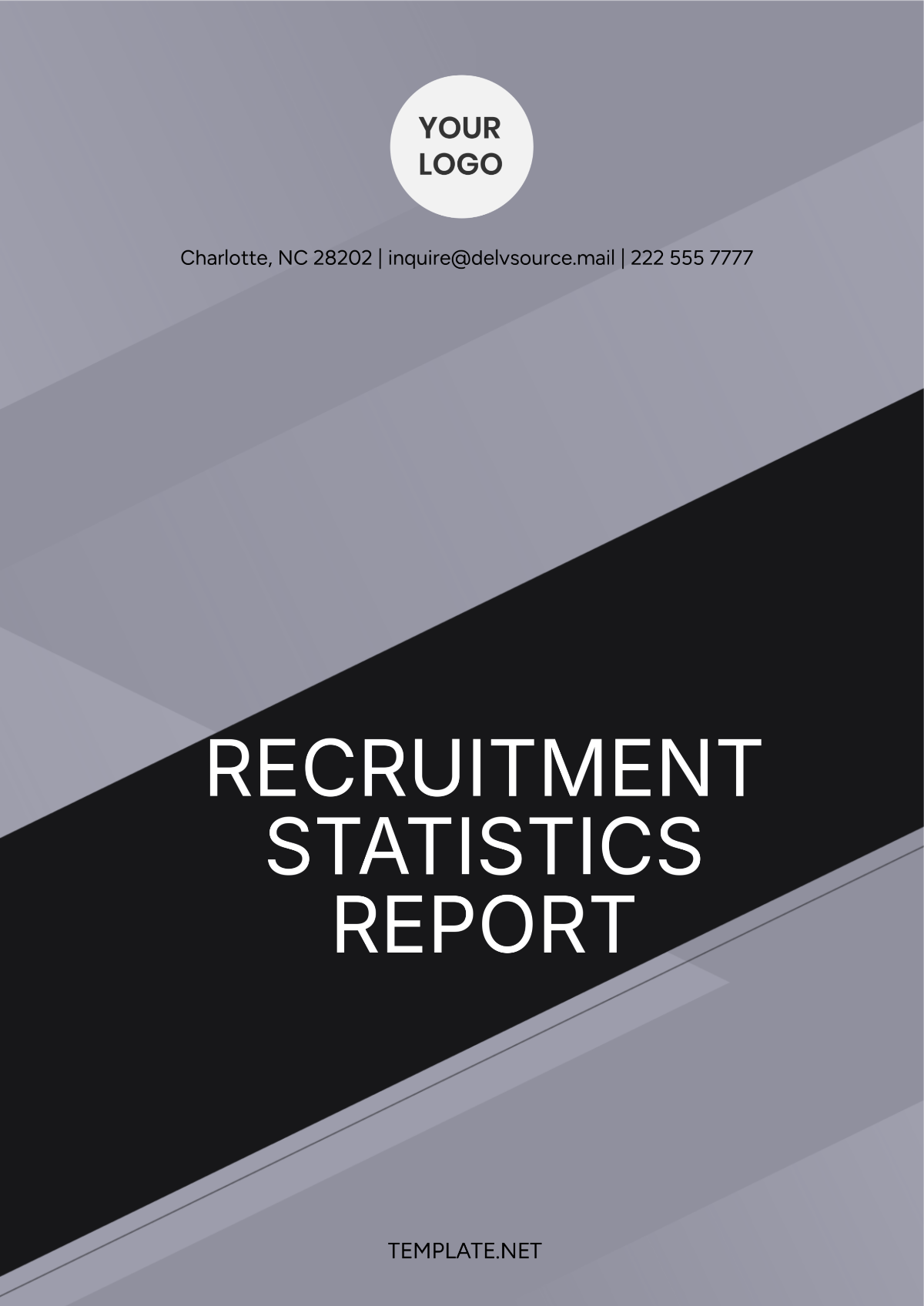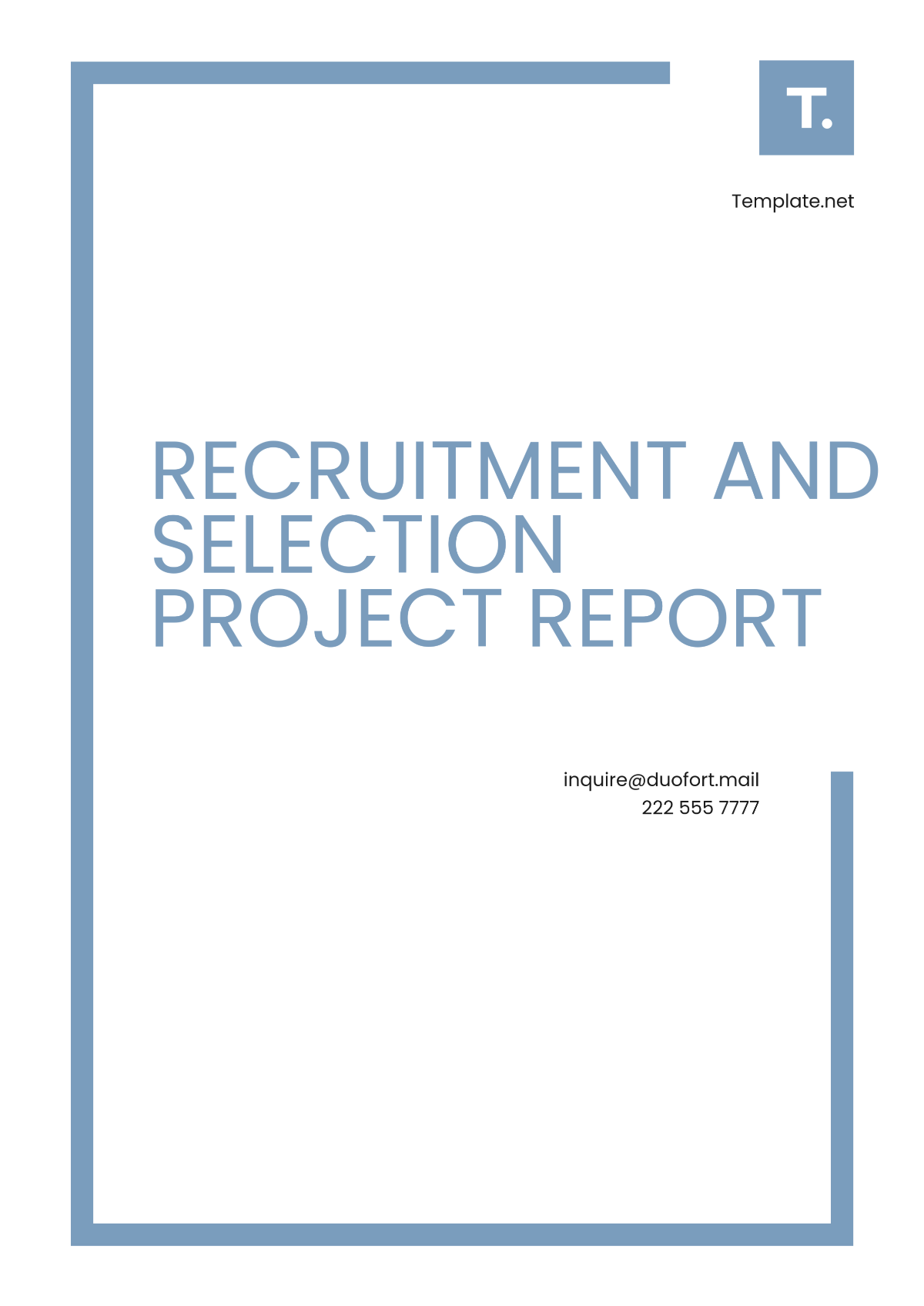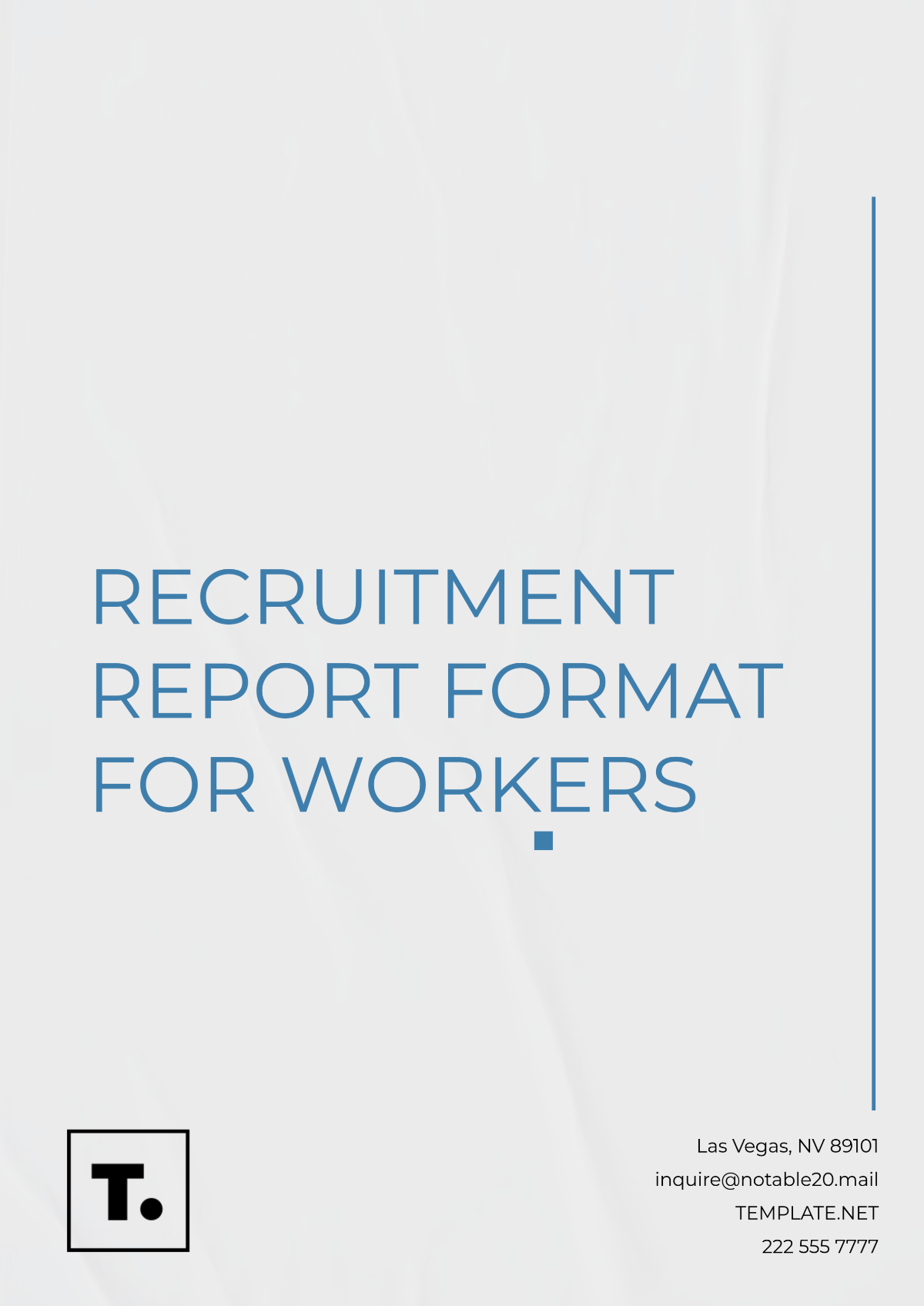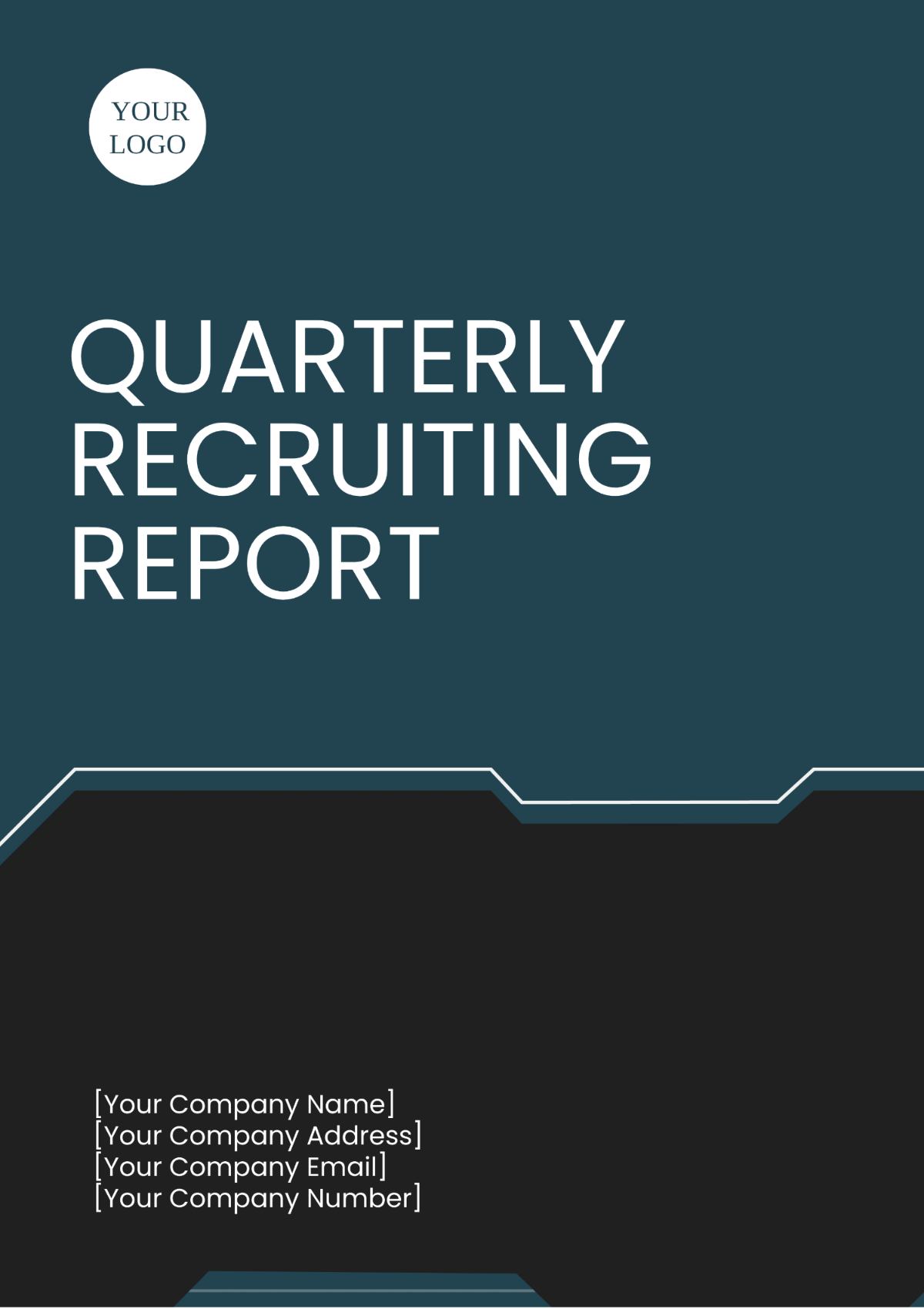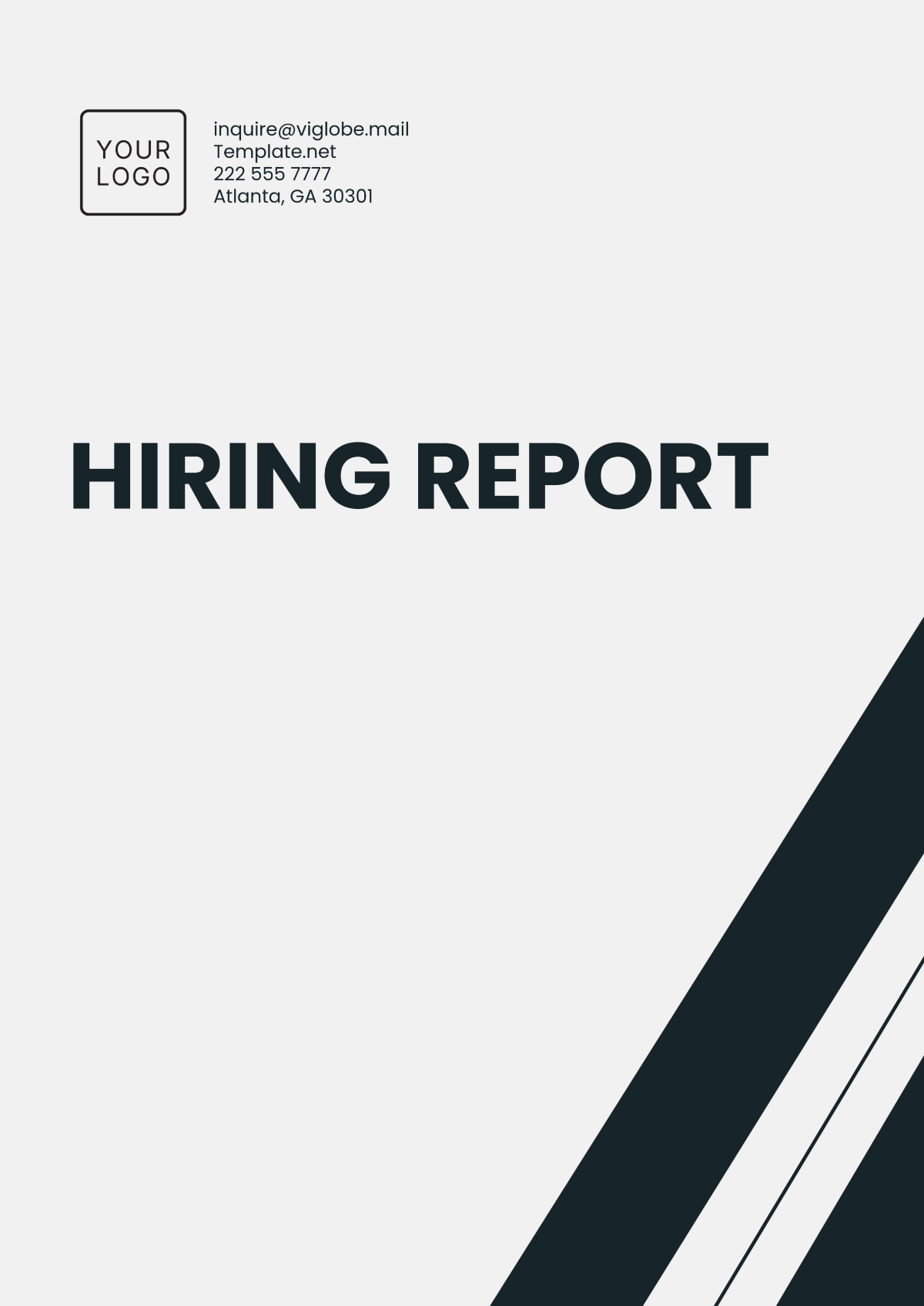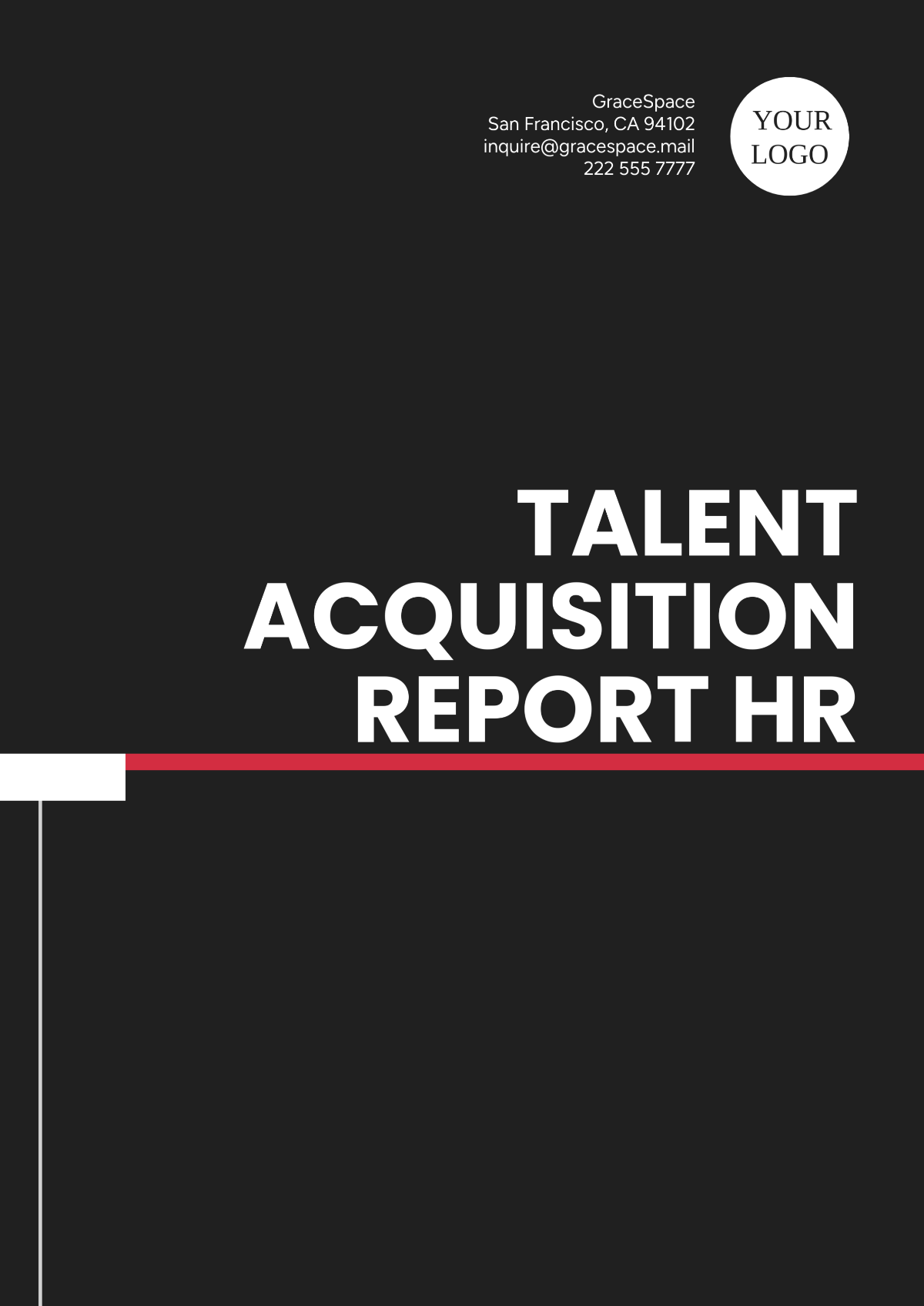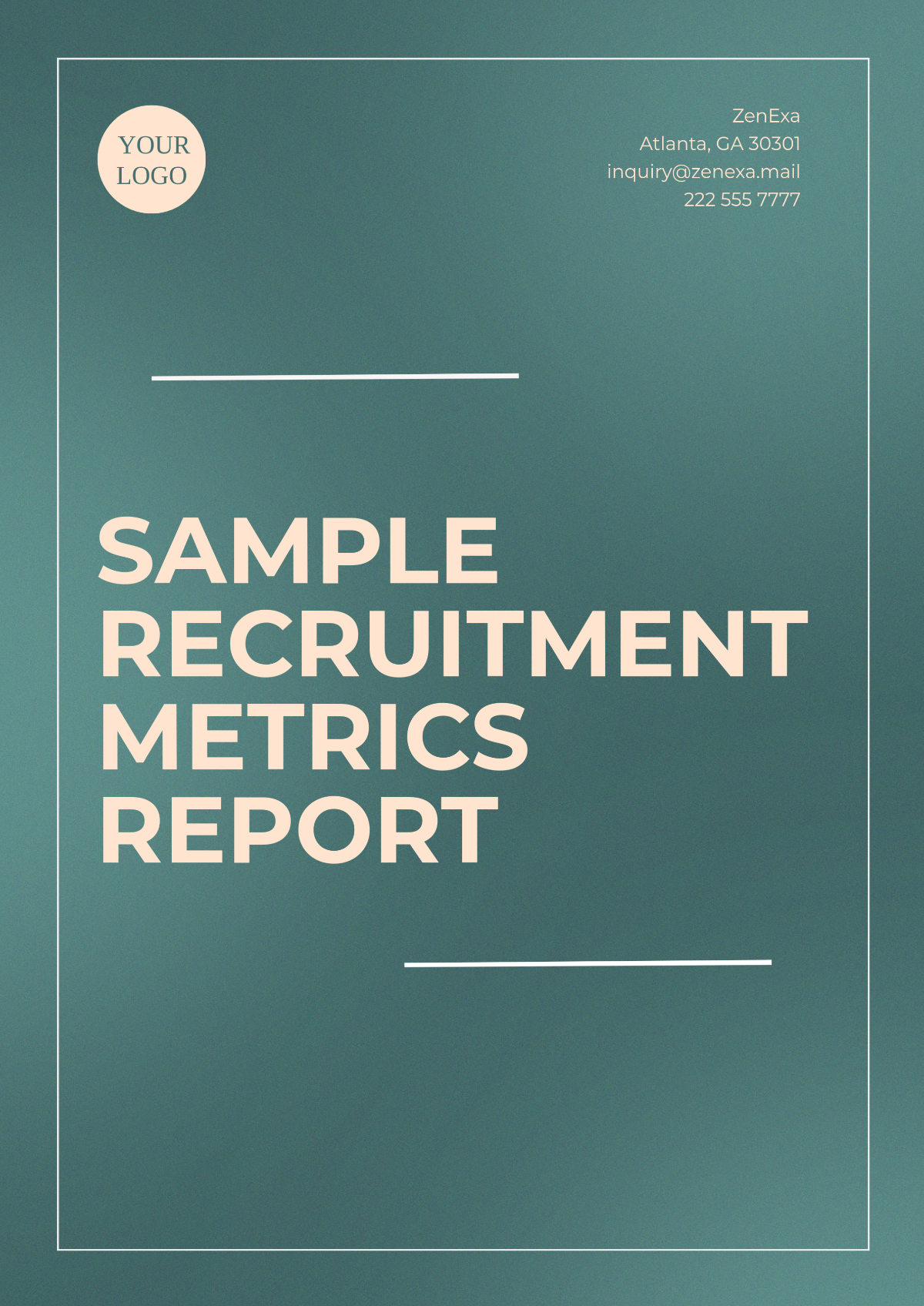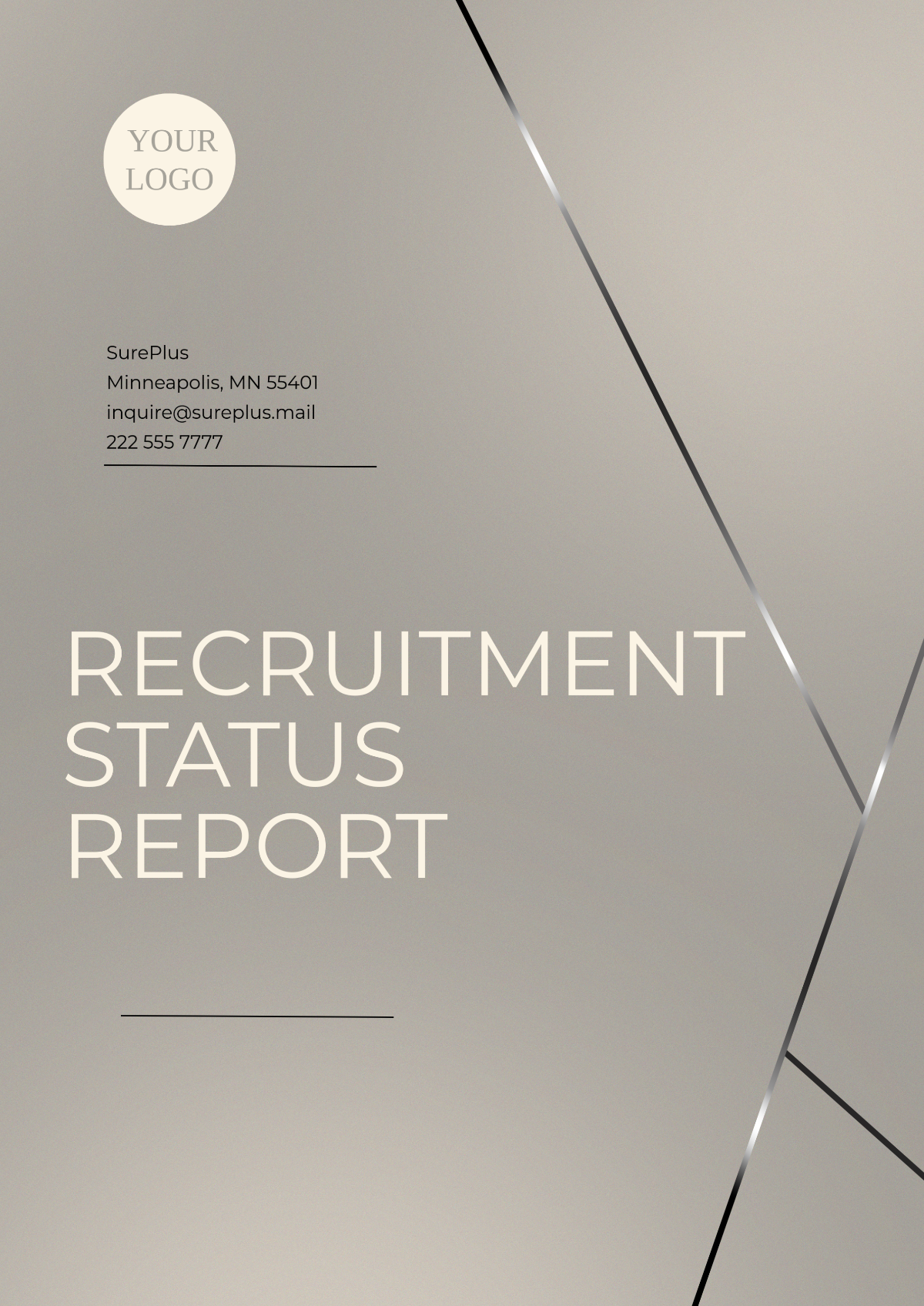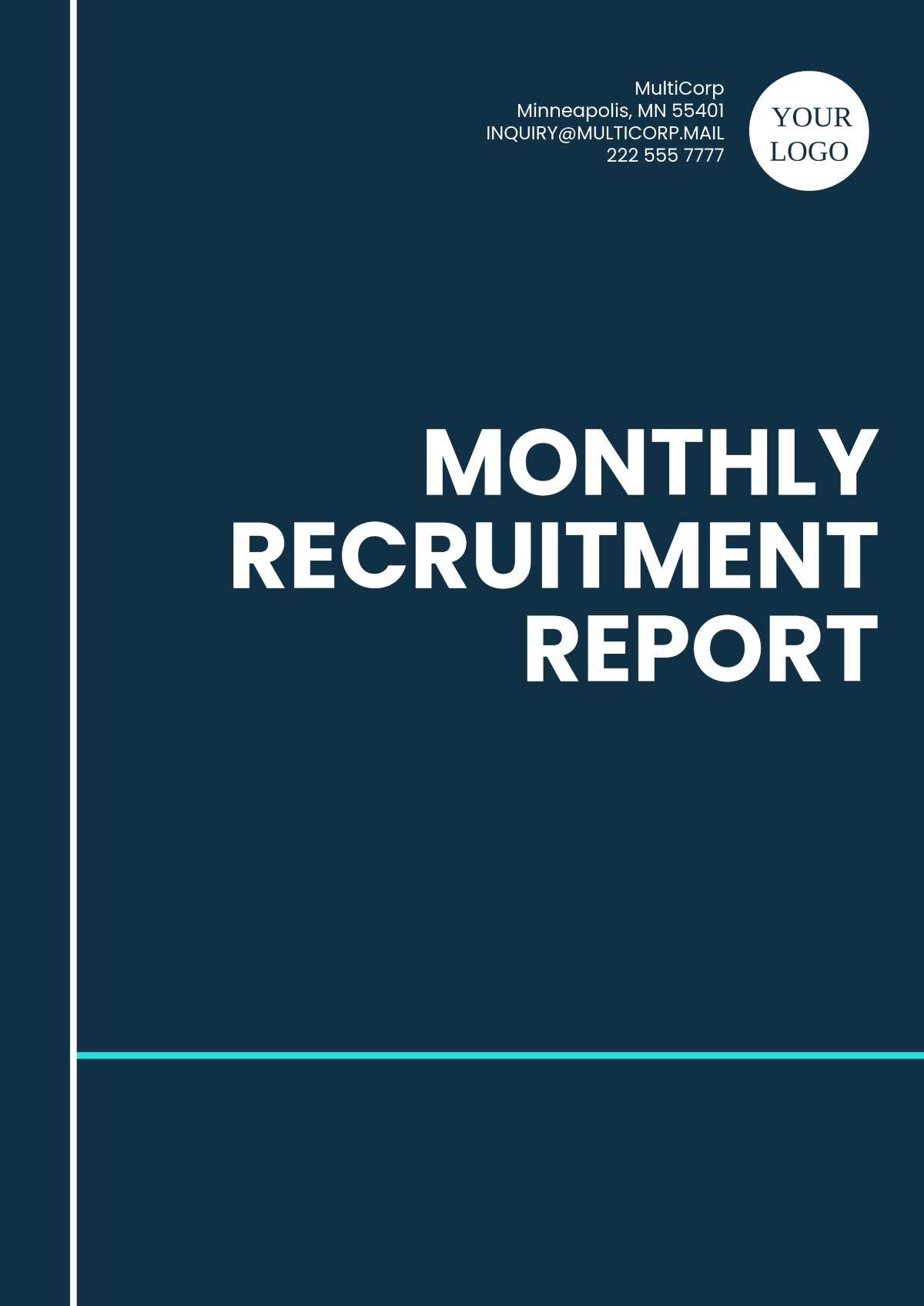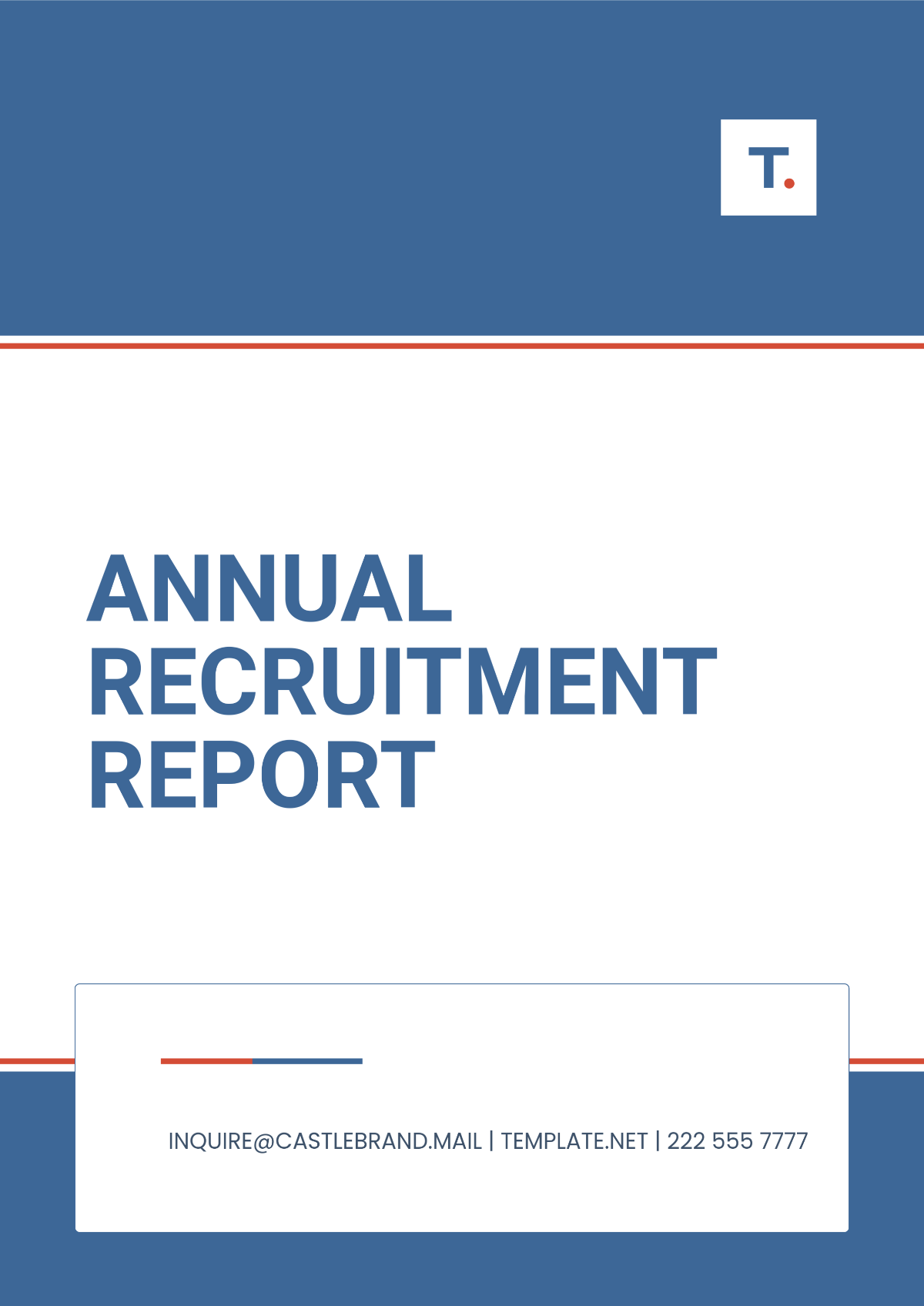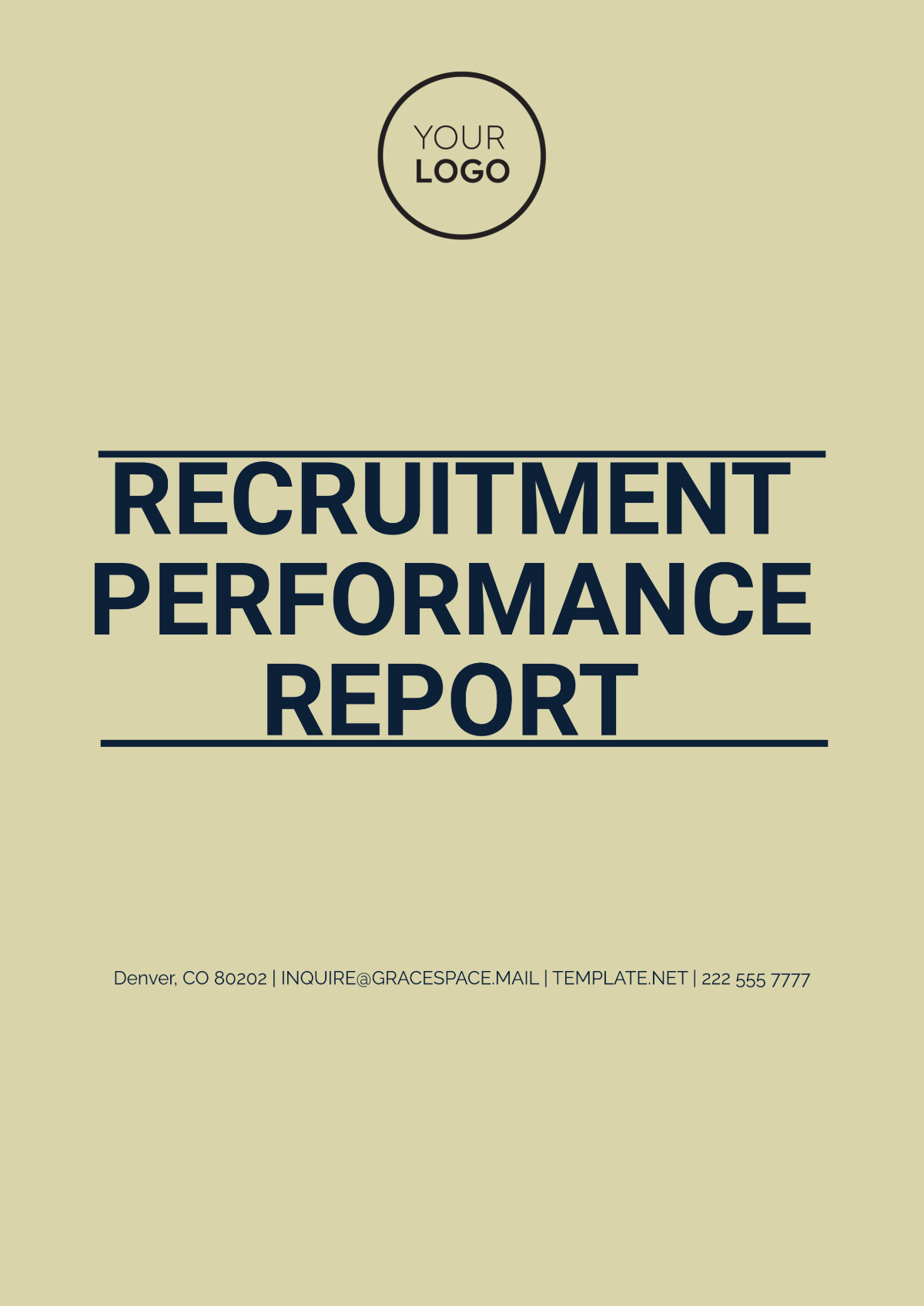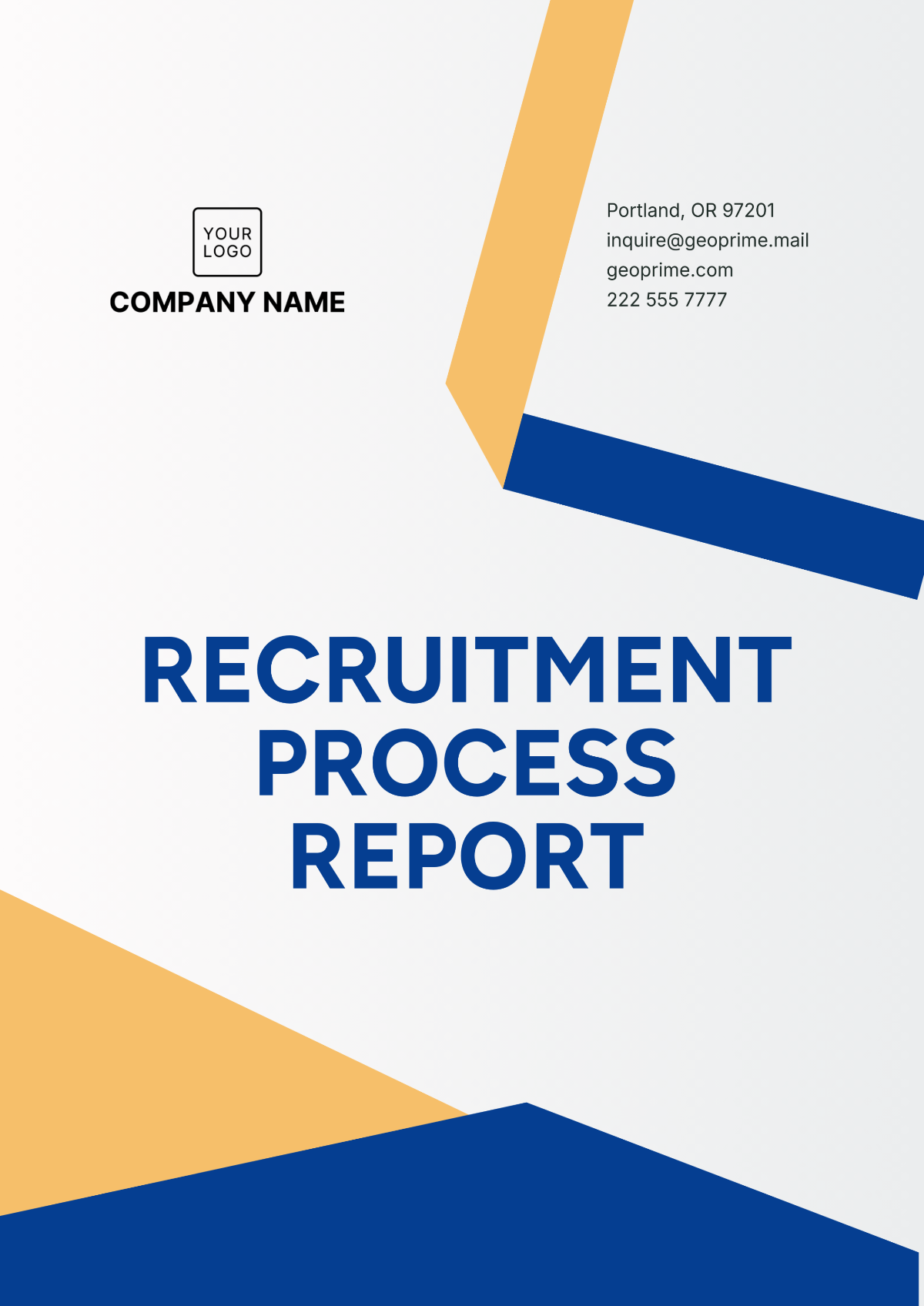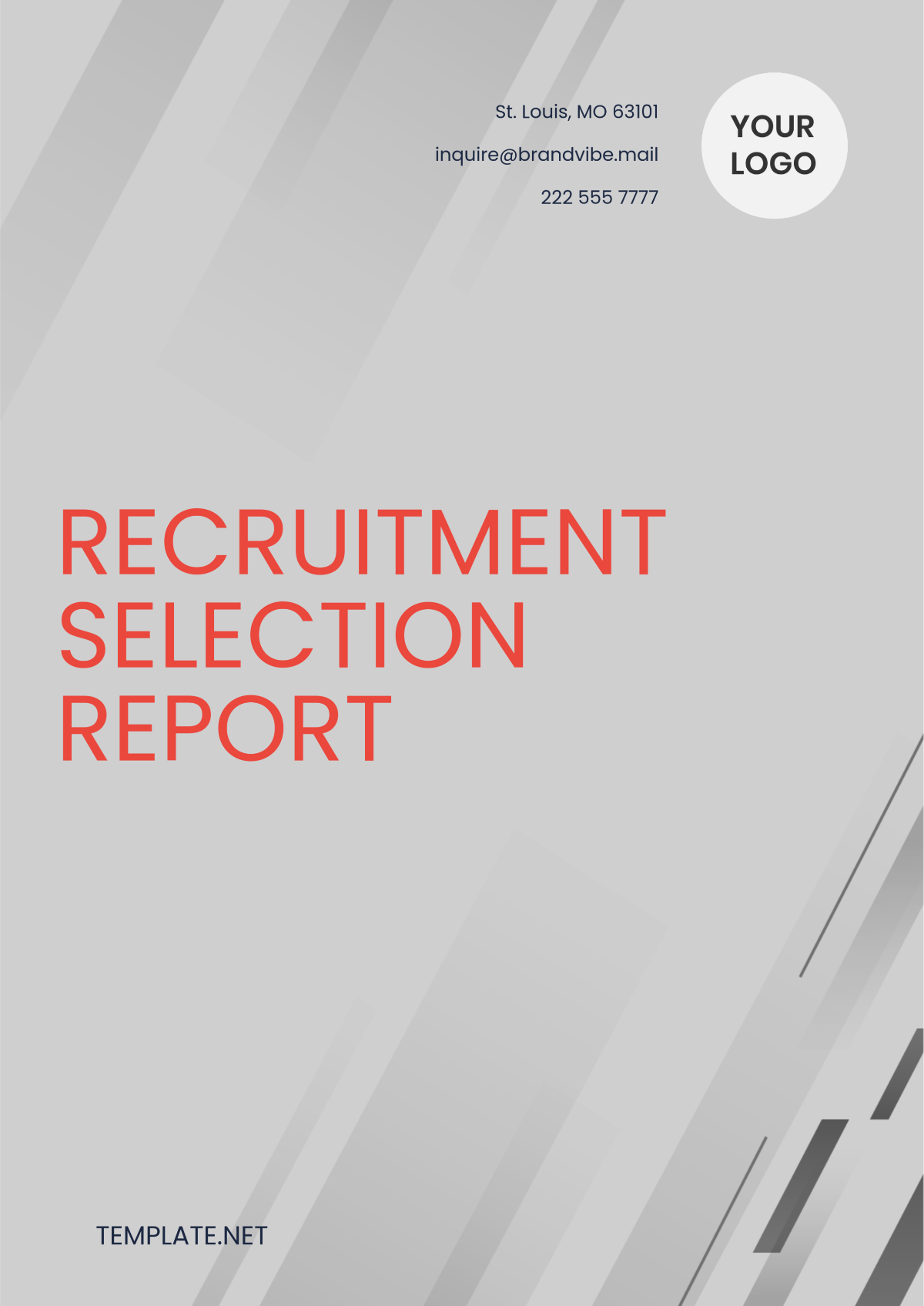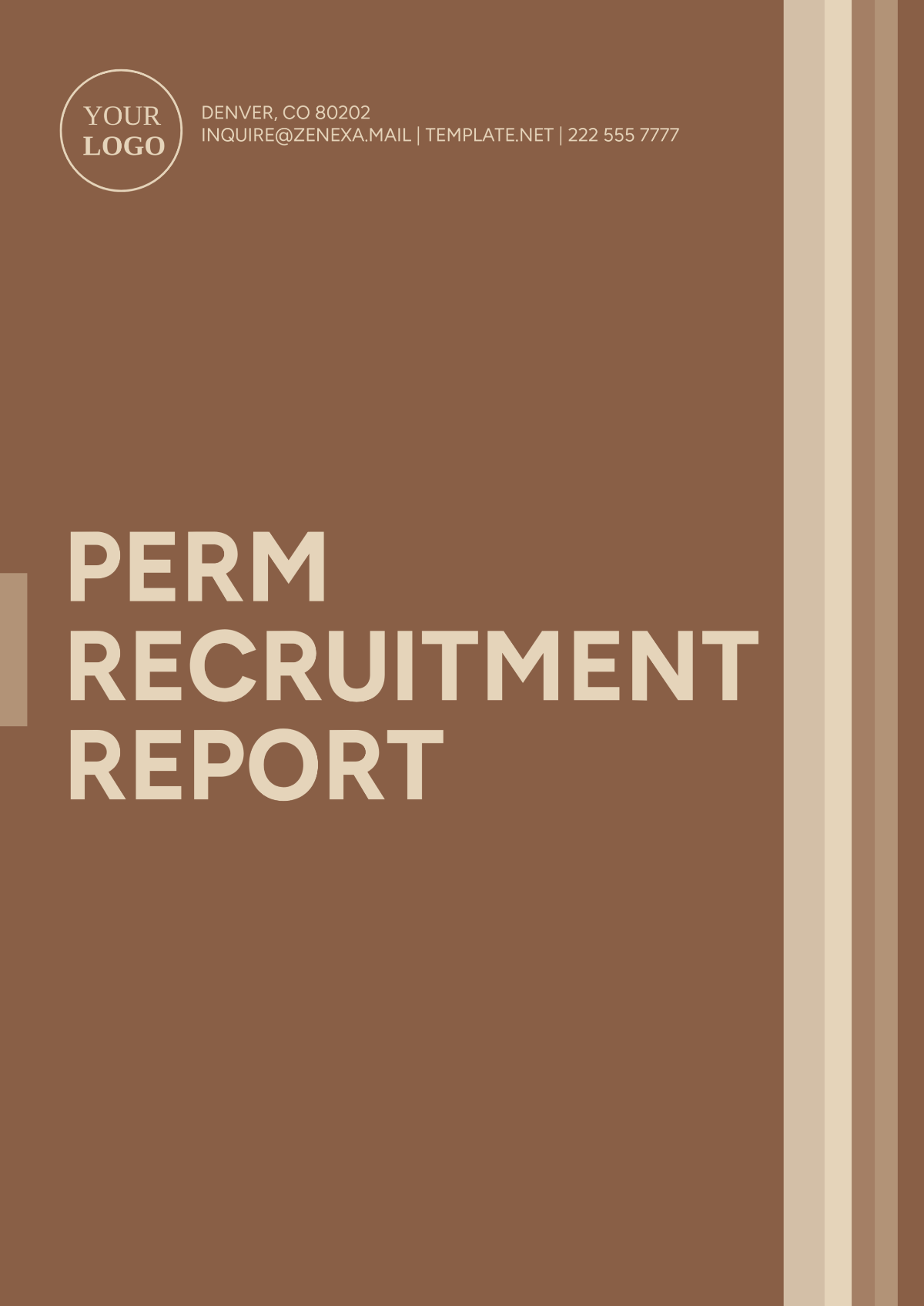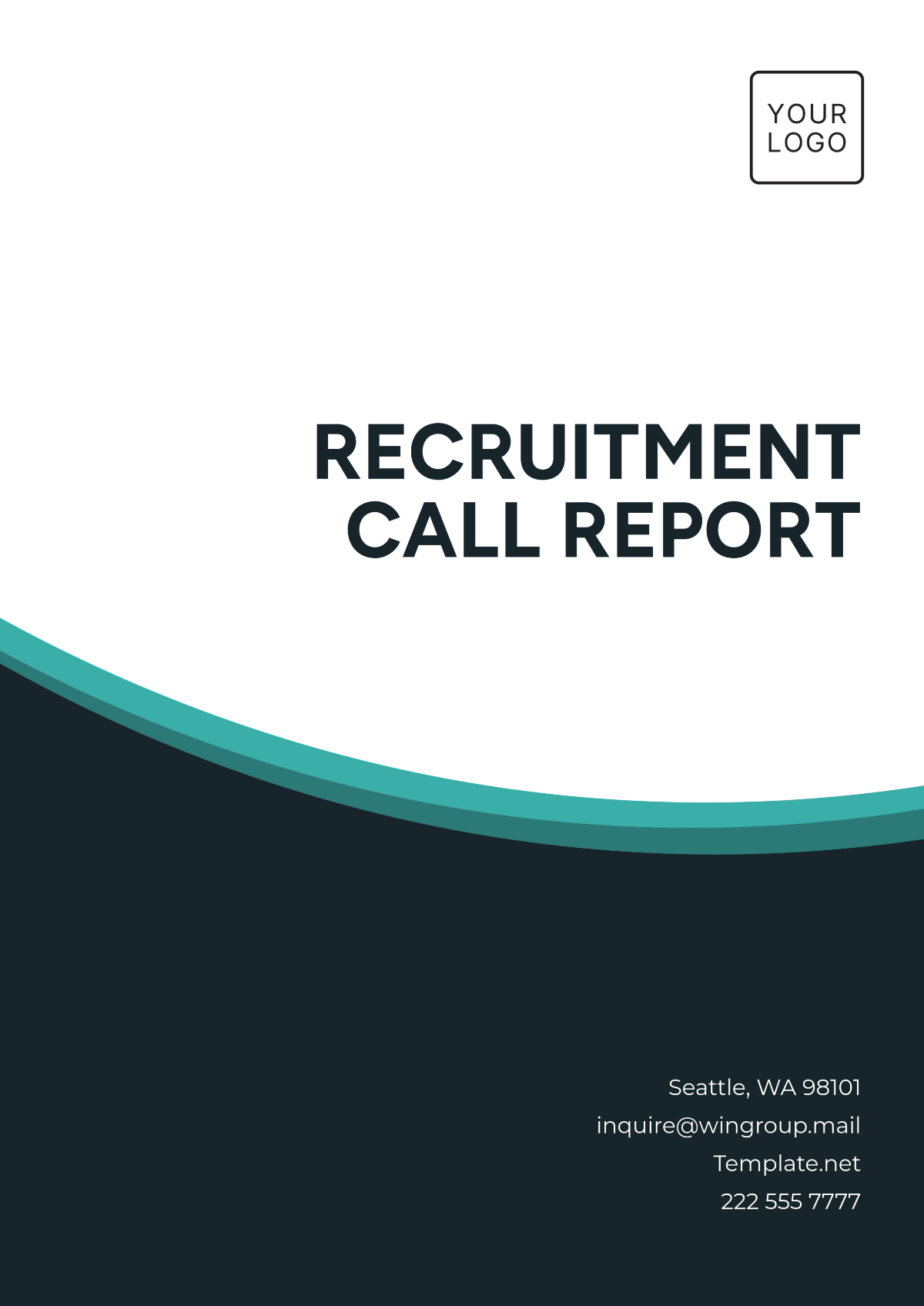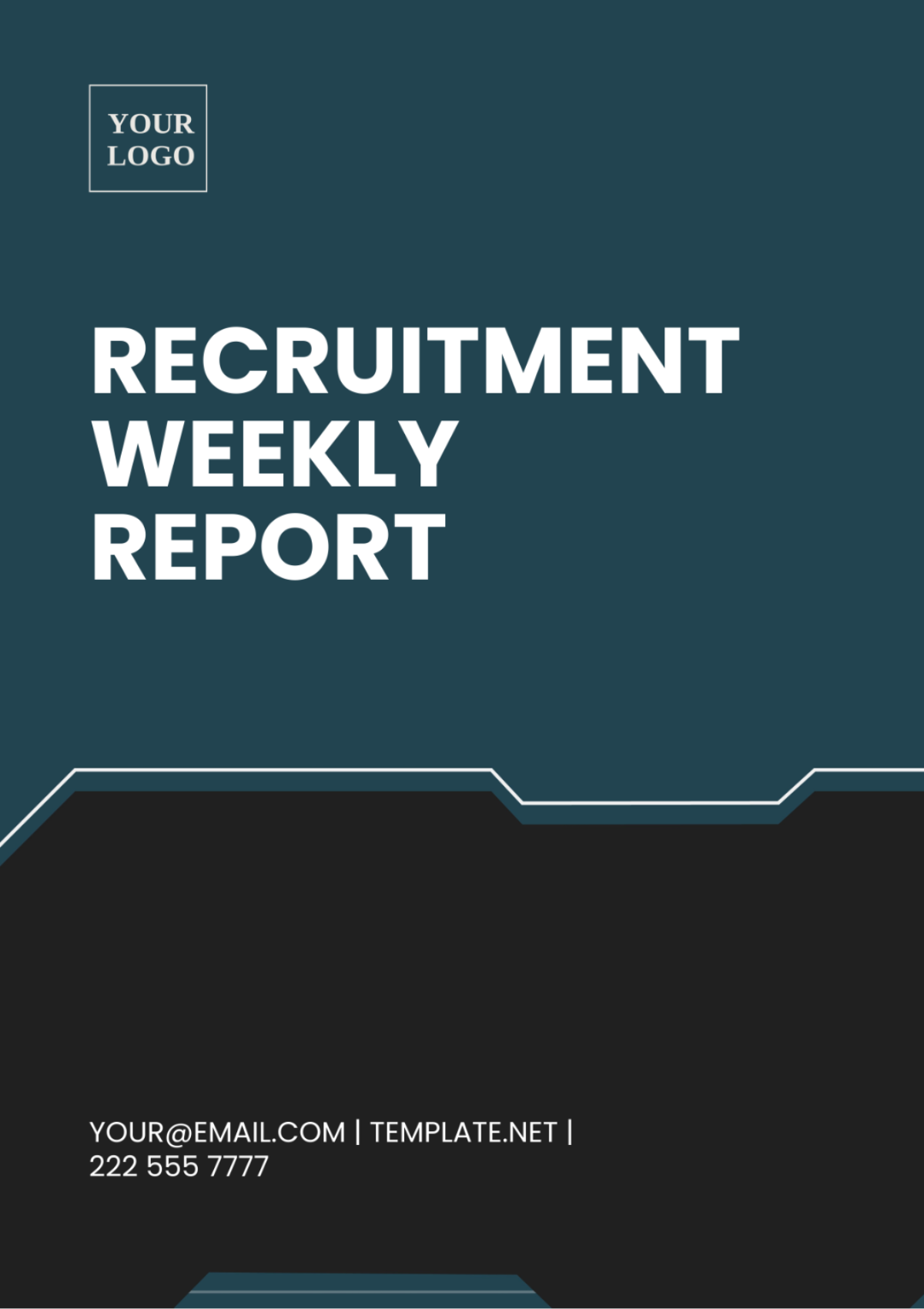Recruitment Progress Report
Introduction
This report provides a comprehensive overview of the recruitment progress for the current fiscal year. It highlights the key objectives, evaluation of recruitment strategies, and progress towards achieving the staffing targets. Ensuring an efficient and effective recruiting process is critical to maintaining competitive advantage and fostering organizational growth.
Objectives
Analyze the current recruitment process.
Identify areas for improvement.
Evaluate the effectiveness of recruitment strategies.
Assess progress towards achieving staffing targets.
Current Recruitment Process
Our recruitment process is designed to identify, attract, and hire top talent, ensuring alignment with the company's values and culture. The main stages of the process include: job advertisement, application screening, initial interviews, final interviews, and onboarding. Below are the details of each stage:
Job Advertisement
Job vacancies are advertised through various channels including the company's website, job boards, and social media platforms. Efforts are made to write clear and attractive job descriptions that capture the attention of potential candidates.
Application Screening
Applications are reviewed by the HR team to shortlist candidates who meet the qualifications and experience criteria. Automated screening tools are also utilized to improve efficiency and objectivity in the selection process.
Interviews
The interview process is designed to assess the candidates' skills and fit for the organization. Initial interviews are conducted online, followed by final interviews, which may include practical assessments, held at our office premises.
Onboarding
Successful candidates undergo an induction program to familiarize them with company policies, procedures, and culture. This stage is crucial in ensuring new hires are effectively integrated into the team.
Recruitment Strategies
Our recruitment strategies are continually revised to adapt to the changing job market and attract the best talent. The strategies implemented include:
Leveraging social media and professional networks for employer branding.
Building partnerships with academic institutions for fresh talent.
Utilizing employee referral programs.
Implementing diversity and inclusion initiatives.
Progress Evaluation
Quarter | Position Filled | Vacancies | Applications Received | Interviews Conducted |
|---|---|---|---|---|
Q1 | 15 | 5 | 200 | 50 |
Q2 | 20 | 8 | 250 | 75 |
Q3 | 22 | 6 | 300 | 80 |
Q4 | 18 | 10 | 280 | 70 |
Conclusion
The recruitment progress for the current year shows promising results with consistent improvement in filling positions. However, there is a need for enhancing application screening methods and increasing the pipeline for high-demand roles. By focusing on strategic recruitment plans and maintaining flexibility in the process, the organization can continue to attract and retain the best talent.
Recommendations
To further improve recruitment outcomes, the following recommendations are proposed:
Invest in advanced recruitment technologies to optimize application screening.
Enhance employer branding through targeted social media campaigns.
Expand recruitment efforts to diverse geographical locations.
Increase engagement with professional networks and alumni associations.
Appendices
Appendix A: Recruitment Metrics
Key performance indicators for recruitment include time to hire, quality of hire, candidate satisfaction, and offer acceptance rate. Continuous monitoring of these metrics is essential for measuring recruitment effectiveness.
Appendix B: Stakeholder Feedback
Feedback obtained from hiring managers and new employees provides valuable insights into the recruitment process and potential areas for improvement.
Appendix C: Future Recruitment Plans
Future recruitment plans focus on aligning with organizational growth, technology adoption, and market trends to ensure a sustainable talent pipeline.

